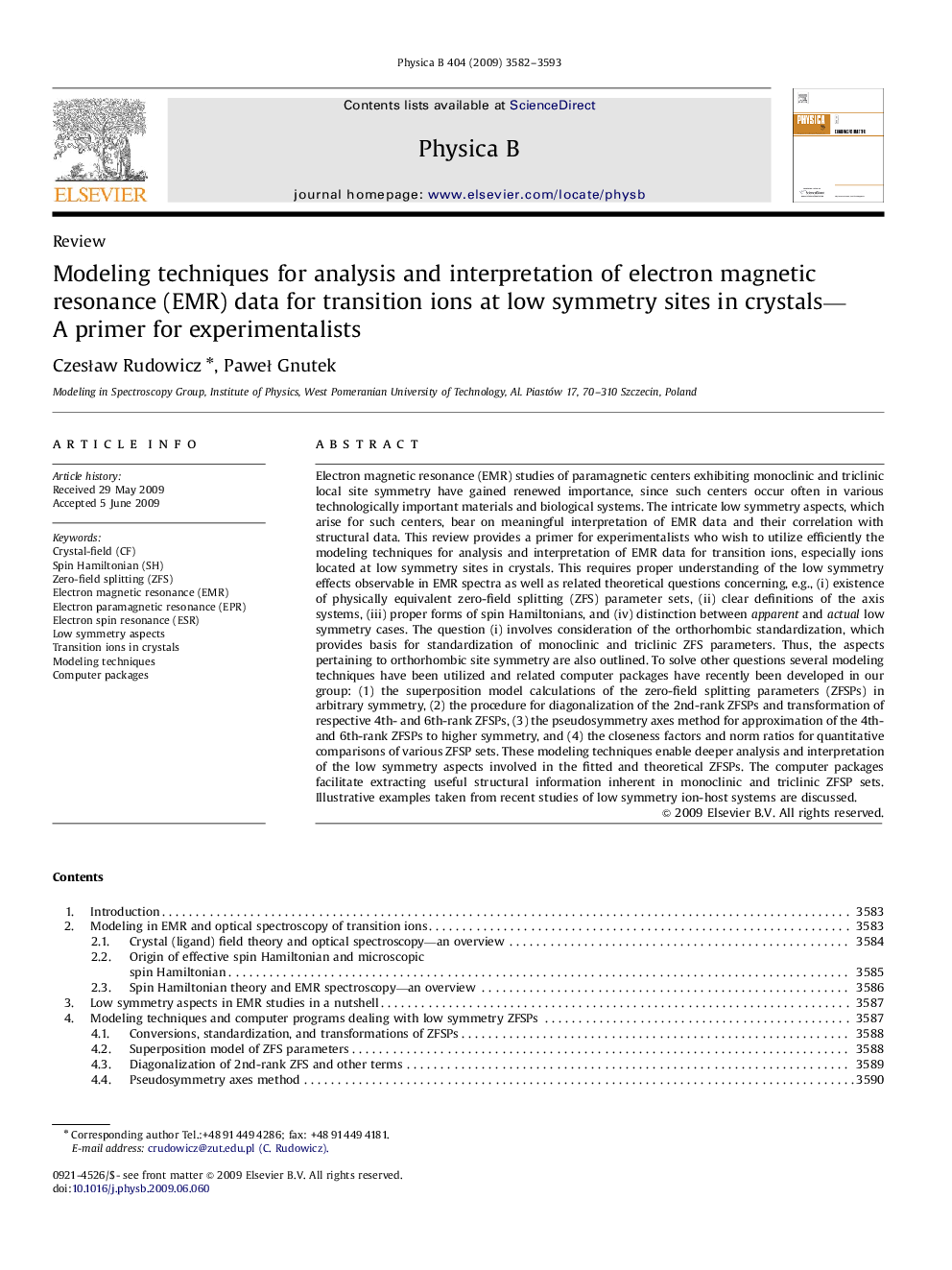| کد مقاله | کد نشریه | سال انتشار | مقاله انگلیسی | نسخه تمام متن |
|---|---|---|---|---|
| 1814004 | 1025643 | 2009 | 12 صفحه PDF | دانلود رایگان |
عنوان انگلیسی مقاله ISI
Modeling techniques for analysis and interpretation of electron magnetic resonance (EMR) data for transition ions at low symmetry sites in crystals-A primer for experimentalists
دانلود مقاله + سفارش ترجمه
دانلود مقاله ISI انگلیسی
رایگان برای ایرانیان
کلمات کلیدی
موضوعات مرتبط
مهندسی و علوم پایه
فیزیک و نجوم
فیزیک ماده چگال
پیش نمایش صفحه اول مقاله

چکیده انگلیسی
Electron magnetic resonance (EMR) studies of paramagnetic centers exhibiting monoclinic and triclinic local site symmetry have gained renewed importance, since such centers occur often in various technologically important materials and biological systems. The intricate low symmetry aspects, which arise for such centers, bear on meaningful interpretation of EMR data and their correlation with structural data. This review provides a primer for experimentalists who wish to utilize efficiently the modeling techniques for analysis and interpretation of EMR data for transition ions, especially ions located at low symmetry sites in crystals. This requires proper understanding of the low symmetry effects observable in EMR spectra as well as related theoretical questions concerning, e.g., (i) existence of physically equivalent zero-field splitting (ZFS) parameter sets, (ii) clear definitions of the axis systems, (iii) proper forms of spin Hamiltonians, and (iv) distinction between apparent and actual low symmetry cases. The question (i) involves consideration of the orthorhombic standardization, which provides basis for standardization of monoclinic and triclinic ZFS parameters. Thus, the aspects pertaining to orthorhombic site symmetry are also outlined. To solve other questions several modeling techniques have been utilized and related computer packages have recently been developed in our group: (1) the superposition model calculations of the zero-field splitting parameters (ZFSPs) in arbitrary symmetry, (2) the procedure for diagonalization of the 2nd-rank ZFSPs and transformation of respective 4th- and 6th-rank ZFSPs, (3) the pseudosymmetry axes method for approximation of the 4th- and 6th-rank ZFSPs to higher symmetry, and (4) the closeness factors and norm ratios for quantitative comparisons of various ZFSP sets. These modeling techniques enable deeper analysis and interpretation of the low symmetry aspects involved in the fitted and theoretical ZFSPs. The computer packages facilitate extracting useful structural information inherent in monoclinic and triclinic ZFSP sets. Illustrative examples taken from recent studies of low symmetry ion-host systems are discussed.
ناشر
Database: Elsevier - ScienceDirect (ساینس دایرکت)
Journal: Physica B: Condensed Matter - Volume 404, Issue 20, 1 November 2009, Pages 3582-3593
Journal: Physica B: Condensed Matter - Volume 404, Issue 20, 1 November 2009, Pages 3582-3593
نویسندگان
CzesÅaw Rudowicz, PaweÅ Gnutek,